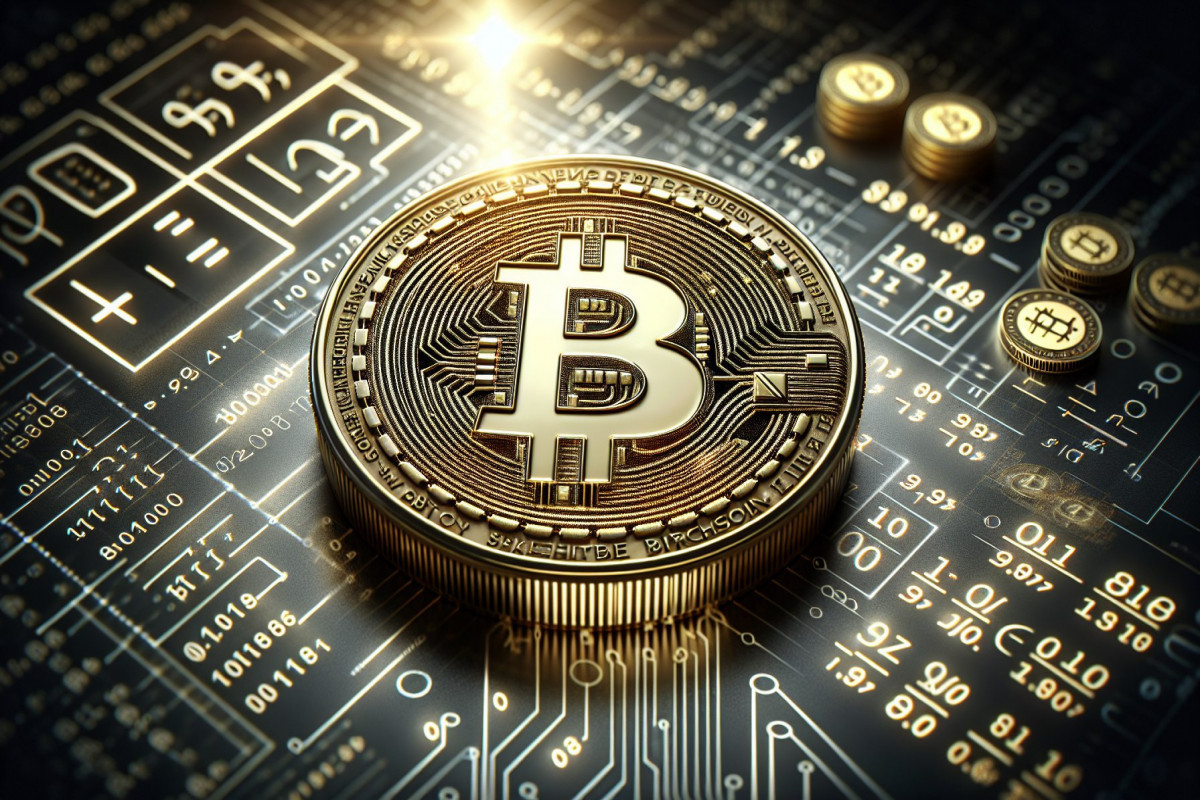To what extent does each of these properties undermine the other?
A Bitcoin node is a computer that runs software to validate transactions and blocks.
- Bitcoin was designed with two fundamental characteristics that are contradictory to each other.
- This contradiction is further exacerbated as Bitcoin enters the institutional arena.
In this article, I want to reflect on a paradox in Bitcoin’s design: that it possesses both the qualities of being uncensorable and transparent. As Bitcoin enters more and more into the traditional financial world, those who seek to promote this asset find themselves at a crossroads: if Bitcoin is uncensorable, it scares investors and users away with the possibility of being involved in a system without control or regulation; if transparency is what allows for control and regulation of that system, what is the point of resistance to censorship?
The reason for these two characteristics
When Nakamoto created Bitcoin in 2008, the problem to be solved was not so much censorship resistance or anonymity, or even long-term value. The problem was to achieve a functioning digital cash system. To do this, to solve the problem of double spending without a privileged actor, he devised what we now know as blockchain: a combination of a shared P2P database with a succession of transactions secured by cryptographic signatures. For that database to be verifiable, it had to be public. Today we have technologies such as ZKP and confidential transactions such as those of Monero that allow transaction information to be hidden while remaining verifiable, but in 2008 the challenge was simply to achieve a system that works.
In this way, Bitcoin was established as a transparent system, exposing all transactions openly, but uncensorable. Those responsible for processing transactions in blocks are miners. A miner can assemble a block with the transactions they want, so they can arbitrarily leave some out. However, a miner cannot force other miners to accept or reject particular transactions. The miner who gets the valid hash for their block wins.
Even if a miner manages to extract a block by censoring a transaction before the others, nothing prevents others from including it in one of the following blocks. The criteria miners use to accept transactions is generally economic: they accept the transactions that pay the highest fees first. In other words, while there is a possibility that some miners will not accept certain transactions, economic logic prevails and those transactions end up going through. This balance between transparency and uncensoriability is beginning to falter as mining and BTC ownership become institutionalised.
The uncomfortable conversation
With the rise of BTC treasuries that we are seeing in 2025, more and more corporate voices are appearing, explaining the benefits of Bitcoin to companies. Since this audience is particularly concerned with legality and regulatory compliance, the discourse presented to them is very different from that directed at cypherpunks (or simply third world savers). However, something of Bitcoin’s cypherpunk foundations always slips through (since its value proposition is closely linked to them).
Take, for example, this promotional video from Swan Bitcoin, which addresses several commonplaces of nocoiners. First, they talk about decentralisation, the impossibility of banning the currency, and then they mention regulation. Around the 10-minute mark, they refer to criminal activity and money laundering. From the video’s perspective, everything is fine because, on the one hand, the government cannot effectively ban the use of Bitcoin; but on the other hand, because it is a transparent system, it is not suitable for criminals, as they can be easily identified. As a second example, let’s look at this article by Alex Gladstein, a human rights activist. The title in Spanish is something like ‘How to make your money dictator-proof,’ and by digging into these two discourses, we can find the contradictions between these qualities of Bitcoin.
Rollercoin – Earn money while having fun
RollerCoin is a fun game where you can earn money while simulating cryptocurrency mining. More than 500,000 users are already part of this trending game.
Gladstein’s text discusses how human rights activists can finance themselves through Bitcoin to bypass controls imposed by authoritarian governments. Now, the earliest example of this financing, mentioned by Gladstein himself, is that of WikiLeaks using BTC when payment processors froze its accounts. In this case, it was not a dictator but the US government wanting to silence the organisation.
This first historical case already highlighted the tension between these two qualities. Who decides what is a crime and who is a criminal? The government, whether democratic or authoritarian. Does it make sense that a government cannot block Bitcoin transactions if it can still go after and imprison the individuals who execute them? Not really, freedom is equally restricted. Why could a ‘good’ government analyse the blockchain to pursue the ‘bad guys’ and a “bad” government could not do the same to pursue the ‘good guys’? Nothing guarantees this. And what objectively decides who are the good guys and who are the bad guys? Of course, nothing.
Herein lies the dilemma: as Bitcoin is an open system with equal rules for all, transparency and uncensoriability cannot be administered on a discretionary basis. Giving it transparency so that ‘criminals’ can be caught in ‘free’ countries also means giving it to catch “activists” in ‘authoritarian’ countries, and vice versa. On the other hand, uncensoriability will also apply to ‘activists fighting oppressive regimes’ as well as ‘criminals acting in bad faith in free countries’. All this was already clear in the case of WikiLeaks and during all the years that the US pursued Assange for exposing its war crimes, claiming that he was harming its national security.
This dilemma is becoming more important this year, as many companies began to include BTC on their balance sheets and US regulators decided to boost the entire crypto industry. All these companies do not manage their BTC as an individual user would, but almost exclusively through financial institutions and wallets declared to official bodies. In other words, these companies do not have self-custody, and even if they did, they still exposed their wallets to complete traceability.
There is not much talk about this issue at the moment, but it could lead to a schism between ‘legal’ bitcoins and ‘grey’ bitcoins in unknown wallets. Cases of platforms rejecting transactions or blocking accounts for having coinjoins or other forms of anonymisation in their histories are already quite common.
In parallel with this, we are also seeing Bitcoin developers concerned about filtering or censoring information stored in BTC transactions. Although initially this filter would only be applied by the nodes, i.e. each node would store the information it considered relevant, without prejudice to the others, in recent days certain proposals have been leaked to also involve miners in this type of filtering.
The questions are similar: Who decides whether entries are ‘spam’ or ‘illegal’? If the address pays a fee of X sats/vByte, what does it matter what information is in the transaction? Isn’t that how the model works? If the door is opened to the arbitrariness of blocking a transaction, or part of it, for containing ‘illegal’ or ‘spam’ information, this will easily be used to block transactions or even addresses for being “suspicious” or ‘unverified’.

At some point, we will have to choose
This tension between transparency (lack of privacy) and uncensoriability cannot be maintained indefinitely. There will be forces and social actors pulling in both directions. As is often said, for example, about the Monero community, it is true that Bitcoin’s transparency helped it enter the institutional world more easily (in addition to the fact that Monero’s privacy features also limit its scalability at a technical level). However, I believe that with so much capital already inside, privacy can be improved by default without causing it to flee.
If we go down the path of transparency, we will end up where we started, with a payment system completely at the disposal of the authorities and at the mercy of their arbitrary decisions. A digital panopticon where all our financial activity is exposed and controlled. At first, this may only be external, with transaction analysis tools and forensic investigations. Then perhaps they will get a majority of nodes to cooperate with control by blocking transactions; and finally, they will surely pressure developers to modify the protocol and leave it centralised in the hands of political authorities.
Not that this is easy to do. Both Bitcoin’s decentralised structure and the global distribution of nodes, miners, users and developers in non-aligned countries make it difficult. However, just as we have international standards for communications and finance, it is dangerously real that international standards for Bitcoin will be established that attempt to regulate and bureaucratise a system in the name of ‘security’, ‘the fight against terrorism’, ‘money laundering’, ‘tax evasion’ and other pretexts for intervention and surveillance.
On the other hand, what I believe is the ethos that led Bitcoin to exist is to continue on the path of privacy and fill in the gaps it had as the first cryptocurrency. In other words, I do not believe that transparency has been a feature of Bitcoin, but only a requirement to make it work in the first place. Similar to how it started using ECDSA signatures because Schnorr signatures were not yet openly available.
Today, there are multiple proposals to improve Bitcoin’s privacy. Second layers such as the Lightning Network and RGB already provide a high level of privacy since their transactions are not public like those on the base layer, in addition to implementing zero-knowledge proofs (RGB) or onion routing (Lightning). At the base layer, coinjoins are the most popular, and more refined proposals are emerging such as SNICKER, CoinJoinXT and PayJoin (BIP 78). BIP 352 for silent payments is also under discussion. However, to be truly effective, these technologies must be implemented in most wallets by default, not just in specific wallets such as Samourai. Doing so will not only increase the value of BTC by enhancing its privacy, but it will also make transactions more efficient by bundling them together.
Trezor – Discover your ideal wallet
Do not risk your cryptocurrencies in online wallets. Securely store, manage and protect your cryptocurrencies in Trezor hardware wallets, apps and backup solutions.
In conclusion, increasing Bitcoin’s transparency will take us back to the beginning and possibly limit or destroy the value of the first cryptocurrency. On the contrary, fixing its privacy shortcomings and reducing its transparency will give it greater value, minimise the possibility of censorship and make this digital payment system the most efficient and robust.





